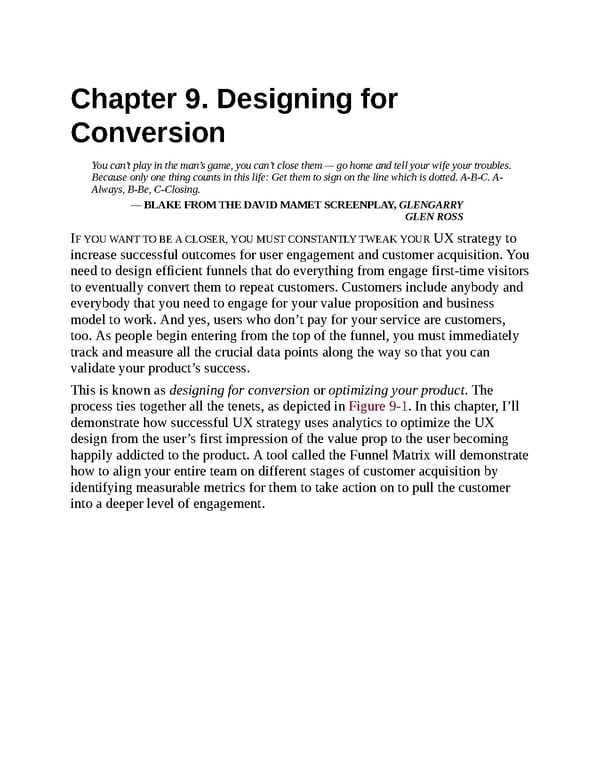Chapter 9. Designing for Conversion You can’t play in the man’s game, you can’t close them — go home and tell your wife your troubles. Because only one thing counts in this life: Get them to sign on the line which is dotted. A-B-C. A- Always, B-Be, C-Closing. — BLAKE FROM THE DAVID MAMET SCREENPLAY, GLENGARRY GLEN ROSS IF YOU WANT TO BE A CLOSER, YOU MUST CONSTANTLY TWEAK YOUR UX strategy to increase successful outcomes for user engagement and customer acquisition. You need to design efficient funnels that do everything from engage first-time visitors to eventually convert them to repeat customers. Customers include anybody and everybody that you need to engage for your value proposition and business model to work. And yes, users who don’t pay for your service are customers, too. As people begin entering from the top of the funnel, you must immediately track and measure all the crucial data points along the way so that you can validate your product’s success. This is known as designing for conversion or optimizing your product. The process ties together all the tenets, as depicted in Figure 9-1. In this chapter, I’ll demonstrate how successful UX strategy uses analytics to optimize the UX design from the user’s first impression of the value prop to the user becoming happily addicted to the product. A tool called the Funnel Matrix will demonstrate how to align your entire team on different stages of customer acquisition by identifying measurable metrics for them to take action on to pull the customer into a deeper level of engagement.
 UX Strategy: How to Devise Innovative Digital Products that People Want Page 241 Page 243
UX Strategy: How to Devise Innovative Digital Products that People Want Page 241 Page 243